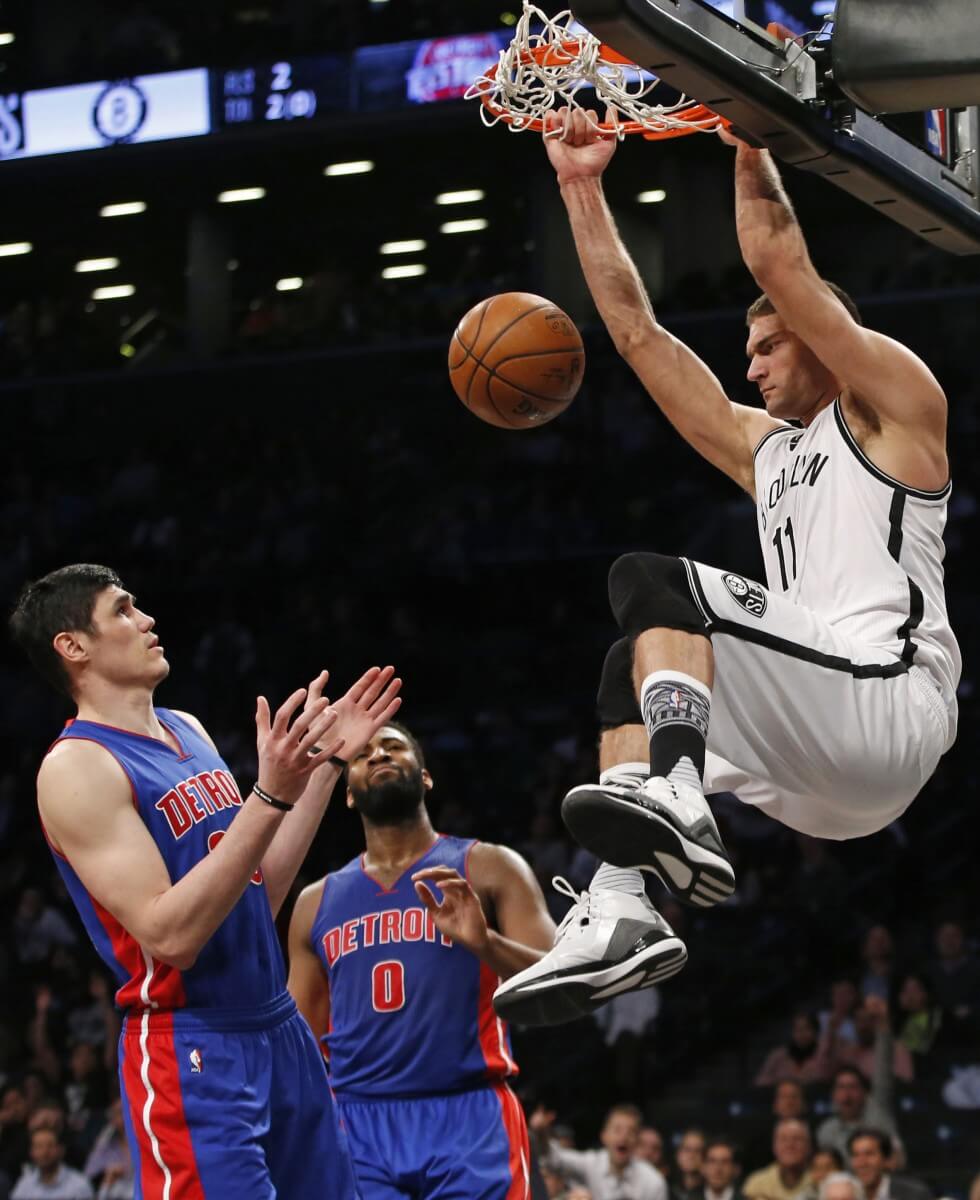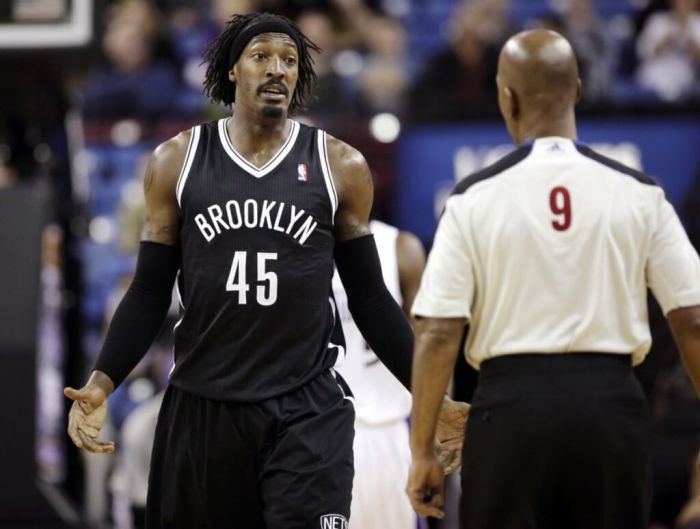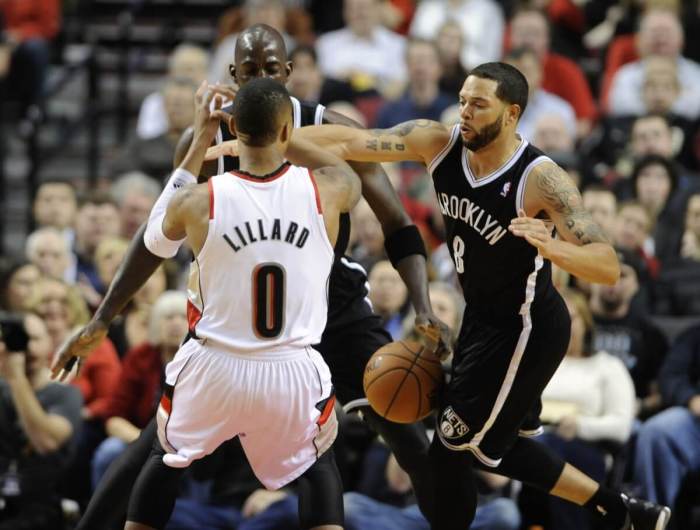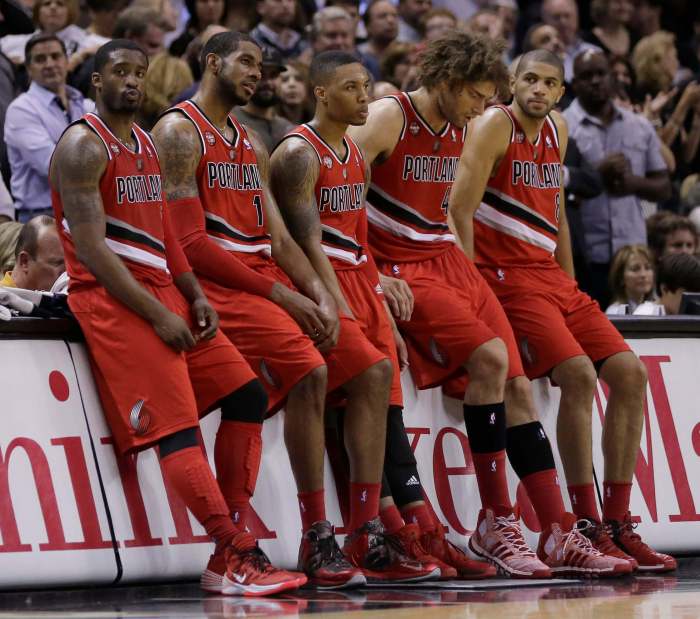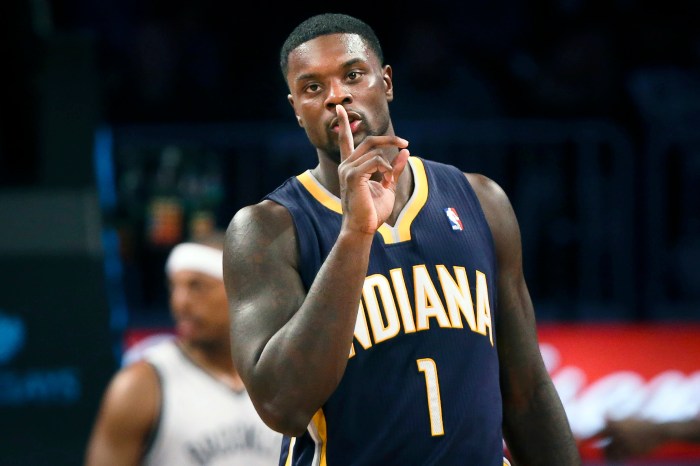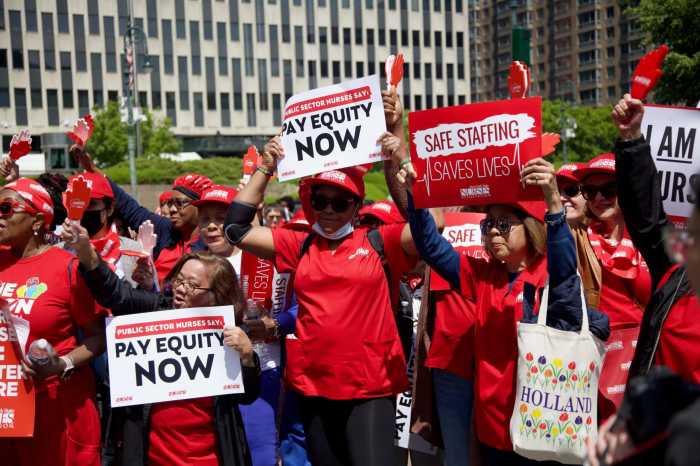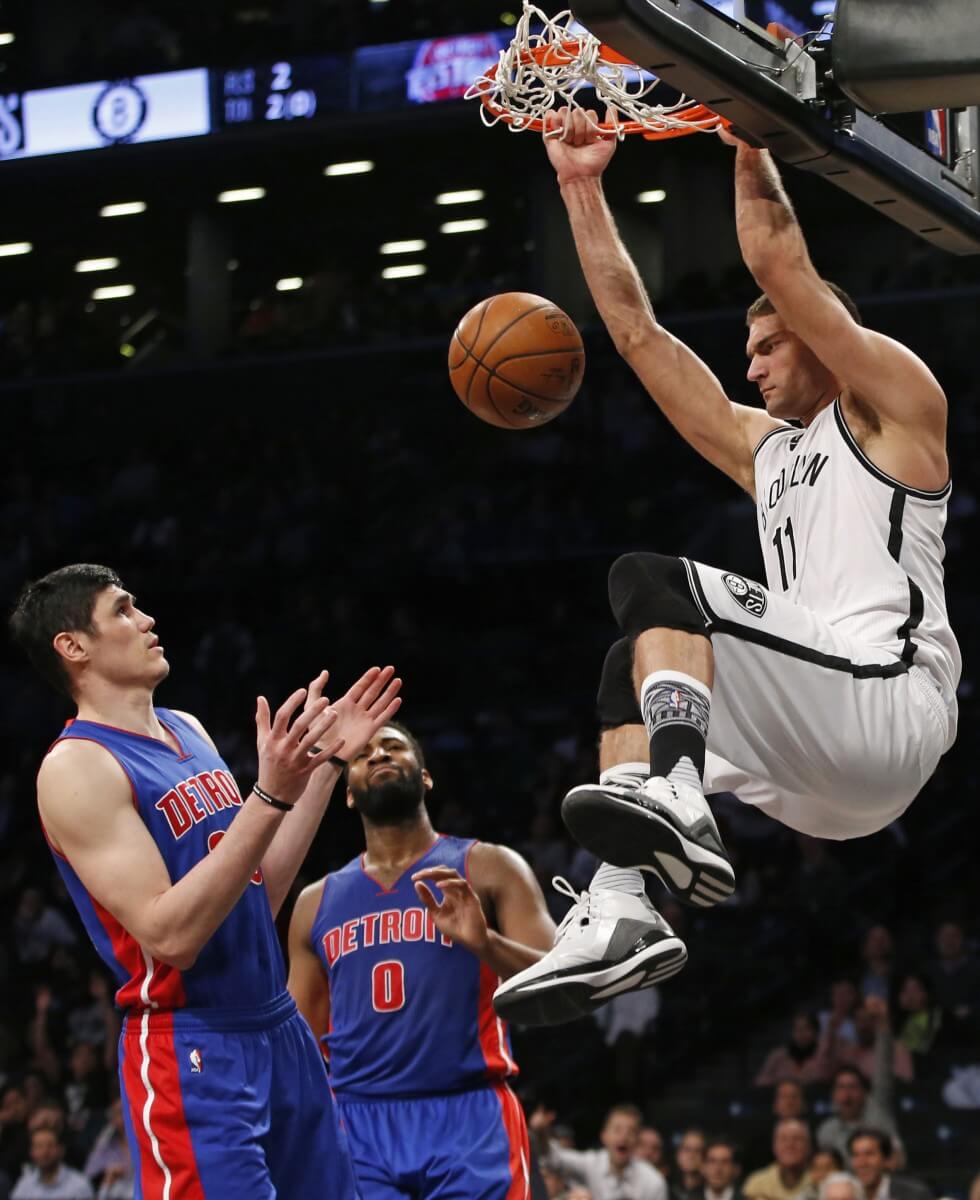
One year ago, it seemed inevitable that Brook Lopez’s days with the Brooklyn Nets were over.
The Nets believed they had a deal at the time to acquire Reggie Jackson from the Oklahoma City Thunder that would send Lopez south. But that deal fell through at the last second, the Nets had no contingency trades, and Lopez remained with the Nets, later signing a three-year deal this past summer.
“It was one of two possibilities,” Lopez recalled to The Brooklyn Game. “I didn’t listen to any of that stuff leading up to it. It was just the day of. I just reacted knowing how it could go down either way. I knew I’d be all right. … I was just telling myself, I’d make any situation work.”
Jackson went on to thrive with the Detroit Pistons, and has since won two Eastern Conference Player of the Week Awards. Lopez, on a depleted roster, is putting up numbers on a team well spiraled out of contention — but has since won three such awards.
Strip away that team context, and Brook Lopez is in the midst of a great season. He’s averaged 20.2 points, 8.2 rebounds, and 1.8 blocks per game on over 50 percent shooting, and is the only player in the NBA to hit all four of those benchmarks this season. Every coach that comes into Barclays Center lists stopping him is the first part of their gameplan.
His value also shows up in the advanced “catch-all” statistics. ESPN’s estimated wins added ranks him tied for 13th among all NBA players with 10.1 EWA, ahead of All-NBA luminaries like DeMarcus Cousins (9.5), Paul George (9.2), and Damian Lillard (9.2); their more conservative “Real Plus-Minus” still has him ranked in the top 25 with 6.71 wins added, ahead of Al Horford, Dwight Howard, and Anthony Davis.
Estimating wins in the NBA is a nebulous exercise; every possession relies on a five-player synergy that changes from possession to possession. (If only the NBA had a “system factor” similar to “park factor” in advanced baseball statistics.) This is more a broad exercise than a specific one.
But by any measure, Lopez is having at least a “very good” season, if not an “excellent” one. And yet, the Nets are bad. At 14-40, they’re on pace for 21 wins, which would be the franchise’s fourth-worst season in their not-exactly-illustrious NBA history.
Therein lies the loaded nature of the question: “what is Brook Lopez’s value?”
While it’s easy to get caught up in the narrative, let’s focus on what he actually does and does not do.
Scoring
Scoring is Lopez’s obvious strength: he leads the NBA in shots made and attempted from inside the arc, despite not playing with a traditionally distributive point guard to set him up for the easy ones. He does have range on his jumper, but best uses it as a secondary threat; most of his shots come within ten feet, and Lopez has a litany of moves in his arsenal that allow him to get to his spots in that space.
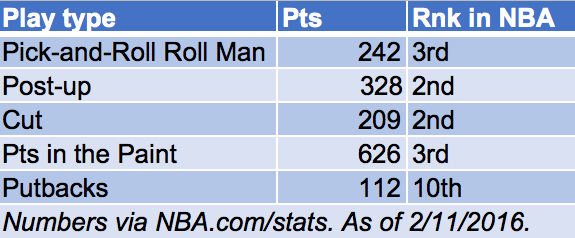
Lopez’s 33-point game against the Pelicans at the end of January highlights his scoring diversity. In order: a put-back layup, a pick-and-pop jumper, a post-up on the right block into a layup, a spin move into the middle of the lane for a fadeaway jumper, a bank shot, a right hook, a cut for a statuesque dunk, a half-spin into a right-side leaner, a lurk for a layup, a pick-and-roll catch at the rim and-one, another right hook in the middle of the lane, and a cut for a two-hand slam to tie the game at 100. It was a full-package night.
“He’s a very talented offensive player,” Shane Larkin, Lopez’s teammate and one of the two healthy point guards that plays with him, said. “(He can) shoot the jumpshot from damn near three-point line, great floater on the pick-and-pop, playing the pocket passes, he’s got a great floater. He can go back to the basket, pretty much has it all on the offensive end. When you talk about his offensive game, you have to talk about him being one of the most offensively talented bigs in the game.”
Is he putting up points on a bad team? Sure. But he’s not tossing up shots and damaging his field goal percentage: Lopez is hitting a solid 50 percent of his shots, and he’s been effective shooting all around the inside of the arc. Despite being the main facet of every team’s gameplan, Lopez has found efficient ways to score even out of inefficient looks.
Lopez uses his combination of strength and length to get to his spots: namely the middle of the floor and the corners, and he uses his preternatural touch to put shots down when he gets there.

There are limits to Lopez’s offensive game. His skills best manifest in a slow pace, which is trending away. He still has no shot outside the arc, despite annual rumors that he’ll develop one. His scoring has sharply declined as games progress throughout his career; whether that’s him getting fatigued, defenses adjusting to his scoring over the course of the game, or his teammates freezing him out, it does happen consistently. But his scoring touch is where it all starts, and the fact that he’s still this effective as a scorer with a depleted point guard rotation speaks volumes to how valuable he can be in that department.
Facilitating
Remember how many different ways Brook Lopez can score? His passing is the opposite. Lopez basically has three different ways to rack up assists: dribble-handoffs with guards, backdoor cuts out of the elbow, and finding someone cutting in the paint while he posts up. The first one anyone can do, the last two are a little different.
They also highlight an important point about Lopez. He occasionally finds spot-up shooters out of a double-teams, but when he’s posted up and looking to score, his vision is locked into that small range around the basket, and the bulk of his best passes have been to wings beelining to the rim: that’s Shane Larkin, Bojan Bogdanovic, and the injured Rondae Hollis-Jefferson.
As a result, the lion’s share of Lopez’s assists have gone to Larkin, who otherwise might seem like an unlikely recipient.
“When you throw it down to Brook, he commands so much attention that most of the time your man will turn his head and see what’s going on down there,” Larkin said. “As soon as your man turns your head, you kinda just cut behind him.
“Brook’s very patient in the post, so he looks for cutters first before he goes to work. So I mean, it works with (Donald) Sloan, it works with anybody. Wayne got a couple (against the Grizzlies Wednesday night). Very good passer. He has it all.”
Larkin’s not giving himself enough credit for making those reads and cuts, but the Lopez of old might not make that his first look. This year’s Lopez has, and it’s the reason he’s averaging more assists per game than in any previous season in Brooklyn.
That’s also why Lopez has just 11 assists to Joe Johnson, despite Johnson & Lopez playing together more than any other Nets duo: Johnson tends to lurk on the perimeter, and is not known for making hard cuts towards the basket.
These are the basics. Lopez isn’t creating out-of-nowhere looks; he’s a scorer first and will never be a game-changing passer for a big man in the lineage of Blake Griffin or Marc Gasol. It’s also true that Lopez was used primarily last year as a pick-and-pop finisher, and is in more situations where he can pass the ball this year.
His good passes are few and far between, and he’s been the beneficiary of a few, ahem, gracious assist tallies at home this year. But as Larkin noted, there’s a concerted effort on his part to at least look first towards a teammate before going to work one-on-one. Hey, if effort is half the battle… well, maybe he’s 1/3rd as good.
Defense
I beat this drum like there’s draft picks inside of it, but that’s because it’s true: Lopez is an underrated rim protector, a big man defends more shots taken within six feet than any other NBA player, according to NBA.com’s defensive statistics. He’s also effective at turning them away, turning what’s regularly a 60 percent look into a 51 percent look.
Another rim protection figure — Nylon Calculus’s excellent “Rim Protection” stat — has Lopez saving just under a point per game, ahead of his more defensive-minded brother and sixth out of 23 centers with at least 1,000 minutes played. He is a solid shotblocker and shot deterrer, and both the eye test and the numbers back that up. (Two notes on that “Rim Protection” stat: the most recent figures as of this posting are only updated through January 23rd, and two other Nets rank poorly by it: Thaddeus Young is near the bottom of the league in rim protection among power forwards, and — no surprise here — Andrea Bargnani ranks as the worst in the league.)
It’s worth noting that he’s better at getting there than his reputation might suggest, as evidenced by the pure number of shots he sends back. But Lopez still gets burned by guards and quick big men looking to take advantage in pick-and-roll situations; he just has to stay near the basket and can’t stray with any confidence. When a situation calls for him to get dragged out of the paint, it often results in an open three-pointer or a clean look at the rim.
You can debate whether or not the Nets should switch up their scheme and have Donald Sloan go over the screen on plays like this, but it’s clearly not in their gameplan to do so, and neither Lopez is stepping up nor is Sloan helping down to stop Drummond.
Lopez’s propensity to avoid that and just stay close to the basket can also hurt him against guards like Mike Conley, who have the skill and range to hit open jumpers and floaters from just inside the paint. Those are tougher shots than layups, but Lopez’s speed tradeoff also means those are a tick cleaner for guards to take.
There’s a reason why the Nets have never had an above-average defense with Lopez as the starting center, and the only time the team was productive defensively was after Lopez went down for the year in 2013-14. A team’s defense has to be built to his skills, which is what makes him so difficult to plop into another scheme; he’s never really been surrounded by the type of guards that would best exemplify his skills as a rim protector: rangy, speedy wings who can switch everything and keep him in the paint defensively as much as possible.
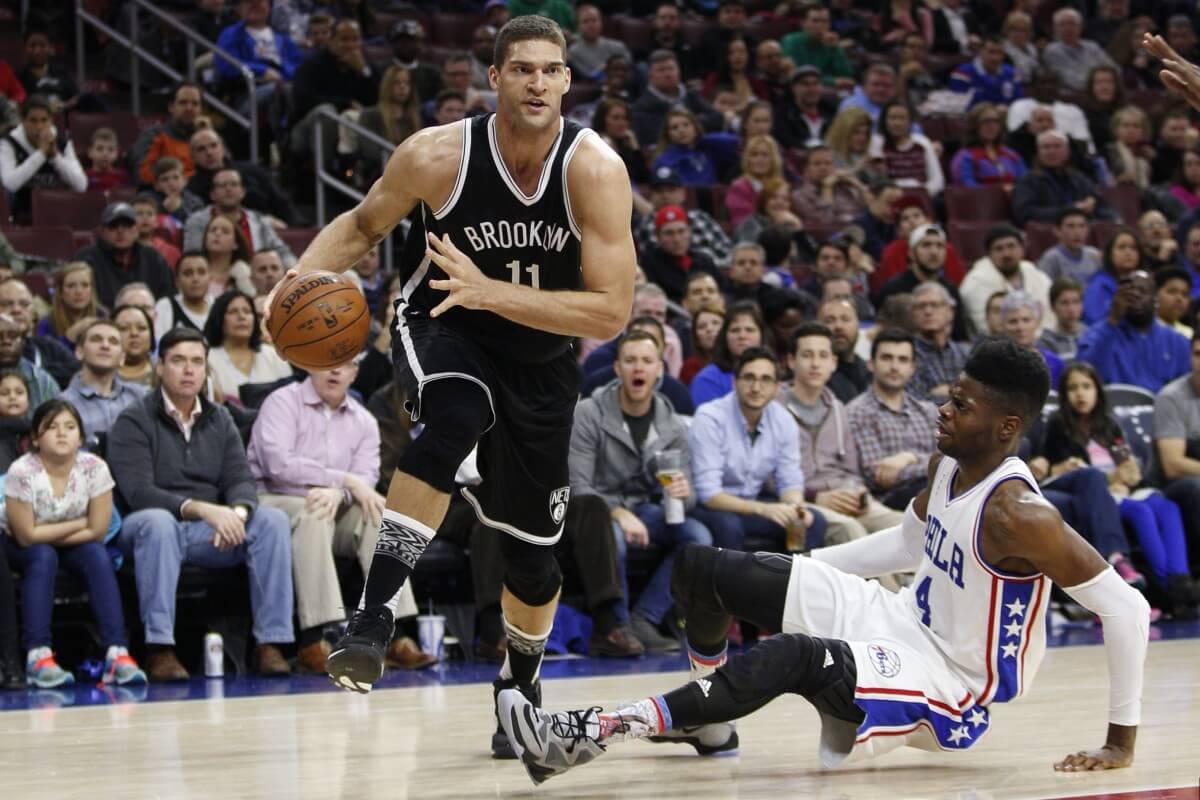
On the trade market
Everyone I’ve spoken with — NBA executives, people in the basketball world, national writers — seems to echo the same sentiment: if you can get two first-rounders for Lopez, they should pull the trigger, cut ties with their longest-tenured player, and begin tearing it all down and restocking their treasure chest.
I mean everyone. It’s not so much a debate as it is a stump speech.
But despite that unanimity, I don’t think it’s that cut and dry. For one, the Nets are backed into one corner: their last road to relevance is signing big-name players on the free agent market. Dealing away Lopez means dealing away the more productive half of your core, and a rarely talented big man who can score.
You think the Nets are bad now? Imagine what they’d be if they replaced him with trade flotsam. Top-quality free agents in their prime don’t often join teams to play with draft picks.
Granted, top-quality free agents don’t often join teams on pace to win 21 games, either.
So it really depends on the quality of a pick, and the illusory superiority of the team’s next general manager. Lopez is only worth a mid first-round pick if you think you can hit on it: if you think you can turn that 15th pick into Kawhi Leonard or Giannis Antetokounmpo, then it’s worth making that deal every time. But more often than not that 15th pick ends up somewhere between Austin Daye and Maurice Harkless — perhaps a solid rotation player on a much cheaper contract, but hardly a franchise-changer. Who knows how a future Nets GM will value that?
Teams also value draft picks more than ever. No team wants what happened to the Nets to happen to them.
Finding a trade partner is equally elusive. There are only 29 NBA teams to strike a deal with, the market is saturated with big names on the trade block, and most teams don’t have both the cap space to swallow Lopez’s pricy $20 million contract (even if that number dwindles if he’s hit with injuries, as Chris Mannix reported), a need for a player with his skills, and appealing draft picks. As mentioned above, Lopez commands enough possessions on offense and requires a specific team on defense to maximize his skills, and just mentioning any potential fit would come with numerous caveats.
In an odd way, Lopez’s value is at an all-time low right now, given the replacement-level quality of his supporting cast and the sense that that’s mostly his fault. He’s a player too talented to ignore or give up for nothing, yet a player too flawed to fit into a modern, up-tempo NBA system without making significant sacrifices.
But Brook Lopez is damn good at that basketball thing, and giving him up for just any old first-round picks just to restore hope seems shortsighted. If rim bonker and underwhelming center Timofey Mozgov can net two first-round picks with one a good bet to land in the lottery, the Nets — whoever’s running the show, that is — should hold firm unless they get a deal too good to pass up.
Statistical support provided by NBA.com/stats.

